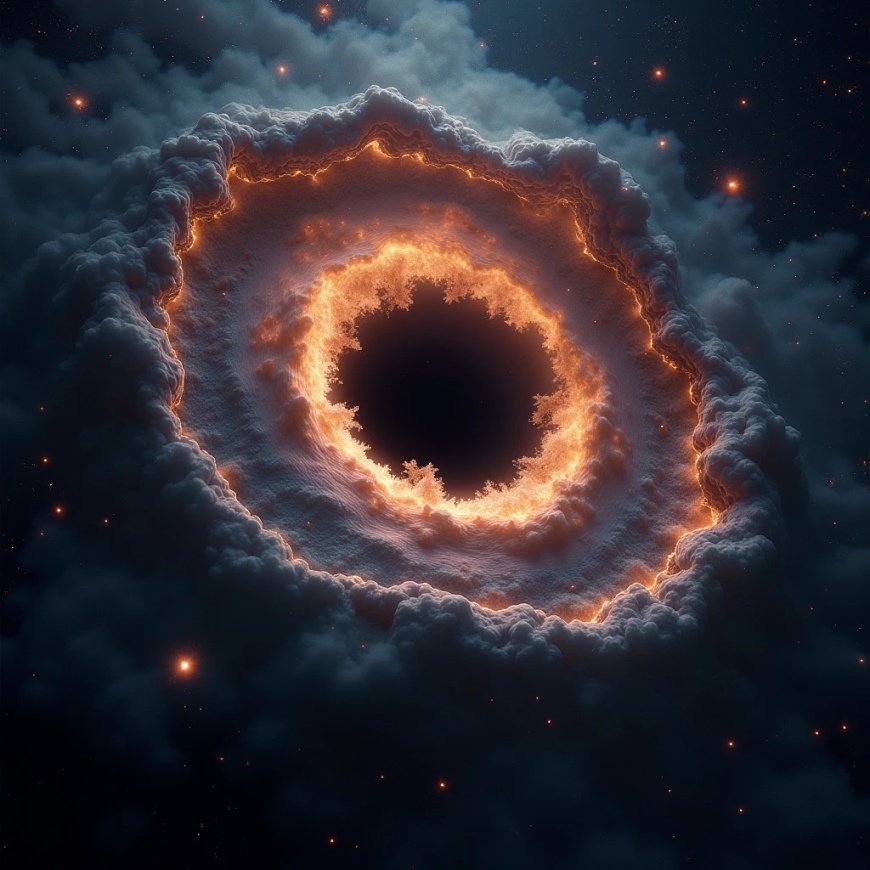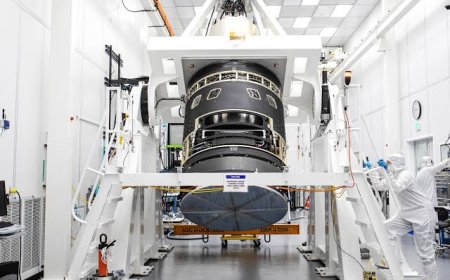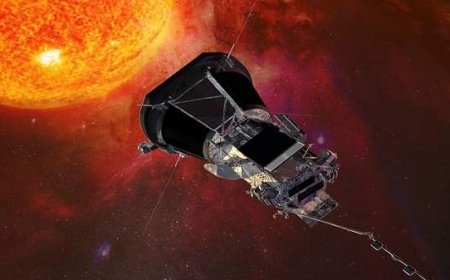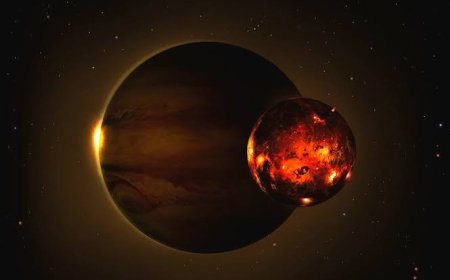Dwarf galaxy's black holes unraveled: triple the number of active black holes
In a groundbreaking cosmic survey, scientists have uncovered a dramatic rise in the number of active black holes residing in dwarf galaxies. These findings, which have tripled the previously known number of active black holes, open a new chapter in our understanding of the relationship between galaxies and black holes. The research, led by a team of astronomers from the University of Utah, used advanced instruments such as the Dark Energy Spectroscopic Instrument (DESI) to map and analyze the galactic landscape, resulting in a catalog that has reshaped our knowledge of the universe.

The Discovery of Hidden Giants:-
Dwarf galaxies, small in size and often overlooked in previous studies, have long been thought to harbor relatively few active black holes, especially in comparison to the large, sprawling galaxies that dominate the cosmos. However, this new census has revealed that more than 2,500 dwarf galaxies contain active black holes—an increase of more than three times what was previously thought. These black holes, characterized by their ability to actively consume matter and emit intense energy, are crucial to understanding the role black holes play in galactic evolution.
Astronomer Ragadeepika Pucha, one of the lead researchers, remarked on the significance of this finding, noting that “these black holes are not just passive relics; they are active, consuming matter and shaping the environment around them.” This newfound recognition challenges the old view that dwarf galaxies were quiet and uneventful, suggesting instead that these small galaxies may be more dynamic and complex than previously believed.
Active Black Holes: The Heart of Dwarf Galaxies:-
A black hole is an object in space with an immense gravitational pull, so powerful that not even light can escape it. When a black hole is described as “active,” it refers to the process of accretion—where the black hole pulls in surrounding gas and dust, heating it to incredibly high temperatures and causing it to emit detectable radiation. This energy output makes it possible for astronomers to study black holes despite their otherwise invisible nature.
In the case of dwarf galaxies, the discovery of these active black holes offers an exciting new frontier in astrophysical research. Researchers estimate that around 2% of the nearly 115,000 dwarf galaxies analyzed in the DESI survey emit these characteristic signals, indicating the presence of active black holes. This is a significant increase from previous estimates, which placed the figure closer to 0.5%.
The finding challenges the long-held belief that smaller galaxies simply didn’t have the conditions necessary to support such energetic phenomena. Instead, it raises new questions about the interplay between black holes and the galactic environments in which they reside.
Intermediate-Mass Black Holes: A New Class of Cosmic Objects:-
Beyond the sheer number of active black holes, the survey has also identified nearly 300 intermediate-mass black hole candidates. These black holes, with masses ranging from about 100 to one million times the mass of our sun, represent a crucial step in understanding the evolution of black holes. They sit between stellar-mass black holes—formed from the collapse of massive stars—and the supermassive black holes that reside at the centers of large galaxies.
This discovery is particularly exciting because intermediate-mass black holes are thought to be the missing link in our understanding of how black holes grow and evolve over time. While stellar-mass black holes are relatively common, and supermassive black holes are found at the centers of galaxies, the intermediate-mass category has been elusive. Previous surveys had only identified around 70 such objects, but the new data quadruples that number, offering astronomers a much larger sample size to study.
The role of intermediate-mass black holes is crucial in understanding how the first black holes might have formed in the early universe. The discovery of these objects suggests that black holes may start out relatively small and then grow over billions of years through cosmic mergers, eventually reaching the supermassive scale seen in the centers of large galaxies.
A New Understanding of Galactic Evolution:-
The presence of active black holes in dwarf galaxies also challenges our understanding of galaxy formation. The question of which came first—black holes or galaxies—has long been debated in the field of astrophysics. Did galaxies form first, with black holes emerging later as a byproduct of their gravitational interactions? Or did black holes seed the formation of galaxies, guiding their structure and growth?
This new data raises the possibility that the relationship between galaxies and black holes is far more intertwined than previously thought. It suggests that the formation of black holes could play a significant role in shaping the properties of their host galaxies. In fact, some astronomers believe that the presence of a central black hole may be essential for the stability and evolution of a galaxy, helping to regulate star formation and the movement of gas and dust.
The discovery of these active black holes in dwarf galaxies provides a new lens through which to study galaxy formation. These smaller galaxies, often overlooked, may offer critical insights into the processes that drive galactic evolution across the entire universe.
The Future of Black Hole Research: A Cosmic Map of the Universe:-
This research is only the beginning. The data gathered by the DESI survey is already reshaping our understanding of the universe, but the full set of findings will be released in 2025, promising even more revelations. The DESI project has already mapped nearly 1.5 million galaxies, and its expansive 3D map of the cosmos is allowing scientists to study galaxies that were previously too faint or distant to observe in detail.
In the coming years, astronomers hope to use this data to uncover even more active black holes in dwarf galaxies and beyond. As the DESI project continues to collect data, it will not only enhance our understanding of black holes but also provide a more detailed picture of how galaxies form, evolve, and interact with their central black holes.
Astrophysicist Mallory Molina of Vanderbilt University, who was not involved in the research, expressed excitement about the potential for future discoveries. “They’ve found all the really bright black holes with basic detection tools,” Molina noted. “But there’s still so much more to explore.” Indeed, this survey is just the beginning, and the full implications of these findings will unfold over the next decade as more data is gathered and analyzed.
Conclusion: A New Era of Cosmic Exploration:-
The tripling of active black holes in dwarf galaxies marks a significant milestone in our exploration of the cosmos. It opens up new possibilities for studying the relationship between black holes and galaxies, especially in these smaller, less-studied regions of space. As astronomers continue to probe the depths of the universe, these discoveries will undoubtedly lead to new breakthroughs in our understanding of the fundamental forces that govern the universe.
For now, the findings of this cosmic census provide a glimpse into the hidden world of dwarf galaxies, where active black holes play a pivotal role in shaping the evolution of the cosmos. The next few years promise to be an exciting time for astrophysics, as researchers continue to explore the mysteries of the universe, one black hole at a time.


















































